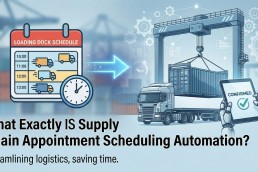Should I Wait on Automation Tools Till After the New TMS Setup?

A common narrative encountered in the freight industry today is that companies are delaying significant technology decisions, particularly regarding automation solutions like appointment scheduling, because they are in the midst of or planning for a transition to a new Transportation Management System (TMS) or undertaking major upgrades to their current systems. The thinking often is, “We’re focused on the big system change, we can’t add anything else right now.”
However, we’d like to offer a counter-perspective, finding this delay strategy somewhat puzzling. The argument is that implementing automation during a TMS transition doesn’t necessarily need to be daunting or the huge undertaking that historical technology implementations might have been. The landscape of technology, specifically in niche areas like scheduling automation, has evolved.
Modern automation solutions are designed with flexibility and future-proofing in mind. They are built with the capability to transition from one system to another. This means that an automation solution implemented while a company is on its old TMS can be moved over and integrated with the new TMS once that transition is complete, often without skipping a beat. This eliminates the need to wait for the entire TMS project to conclude before starting to reap the benefits of automation.
Beyond simply being transferable, some automation technologies can even provide value during the transition process itself. They can actually help enrich and qualify the data that’s going into your new system. Clean, accurate data is crucial for the success of any new system implementation. An automation tool that processes and standardizes data as it performs tasks can proactively improve the data quality before it’s migrated to the new TMS, making the transition smoother and the new system more effective from day one.
Therefore, the message is clear: companies undergoing or planning a TMS change should not view it as an automatic reason to delay automation. Instead, they should explore flexible automation solutions that can not only operate during the transition but also potentially enhance the process and the quality of data for their new system. Implementing automation now can lead to immediate ROI and position the company for even greater efficiency once the new TMS is fully operational.


